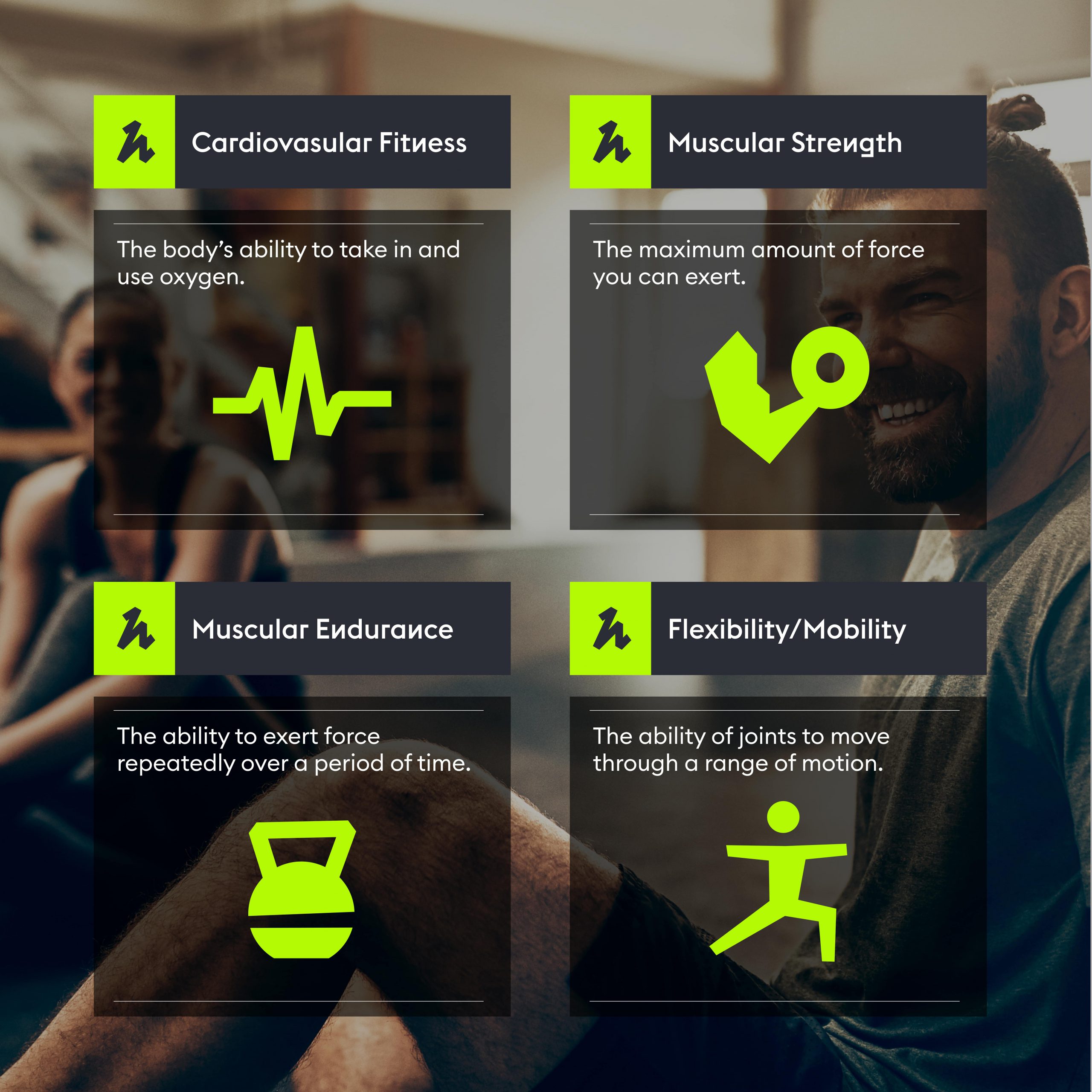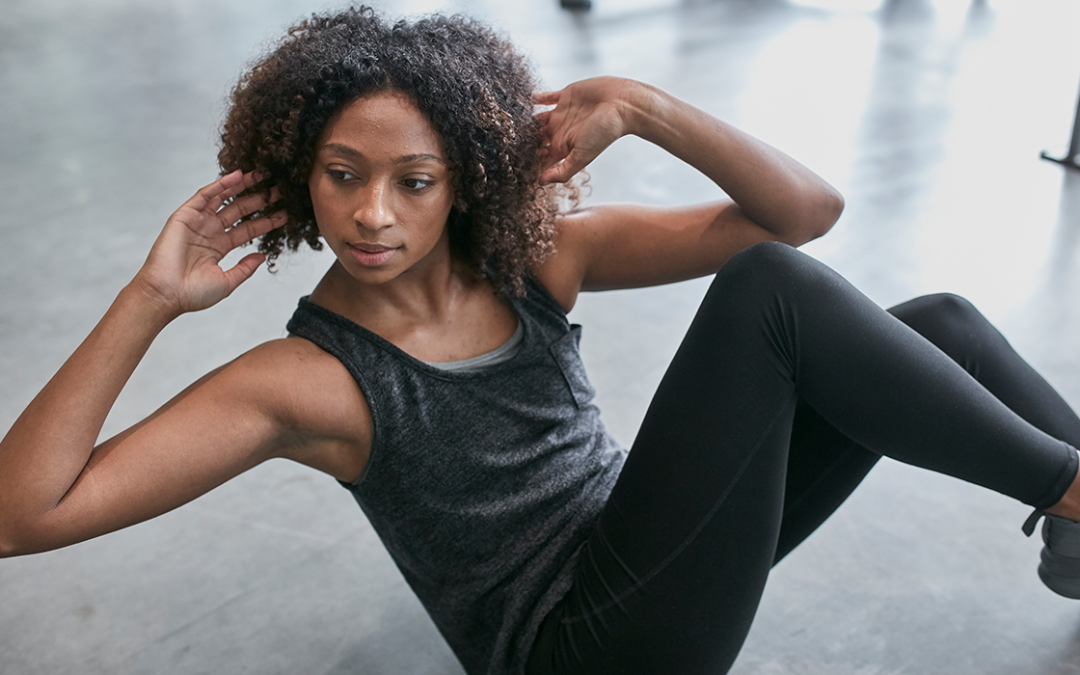Whilst there is some truth in that, it massively oversimplifies a big umbrella term with a different definition depending on the context you use it in and who you ask.
We tend to reduce fitness down to what we look like. While body composition does come into it, it’s only one part of what fitness involves.
So, what really is fitness? What does it mean to be fit? How can we find a definition and a value that suits us, encourages us to get involved, and plays the perfect role in our lifestyles?
Are you an employer? Hussle now offer flexible, discounted access to our fitness venues as an employee benefit. Elevate employee wellbeing.
What are the different types of physical fitness?
When we talk about fitness, we’re often referring to physical fitness. But there are other types too. Skill related fitness, nutritional fitness, mental and emotional fitness. A good reminder that our wellbeing isn’t solely made up of our bodies ability to do squats.
In terms of physical fitness, our capabilities can be put into four categories: cardiovascular fitness, muscular strength, muscular endurance, and flexibility/mobility. Body composition can also be seen as a physical fitness component, but it isn’t linked to a particular exercise; it just describes your body fat/bone/water/muscle ratio. So, for the purposes of this article, we’ll ignore it.
With physical fitness, you can excel in one type and struggle with the other—an excellent reminder to broaden our perspective a little when we talk about being fit. People can have different levels of fitness in various categories.
Cardiovascular fitness
Cardiovascular fitness is our body’s ability to deal with oxygen. In particular, the efficiency with which our lungs and heart can take it in, transport it, and use it to fuel our movements. Activities that test and develop our cardiovascular fitness, or cardio as we like to shorten it to, are things like running, swimming, cycling, and most sports.
Muscular Strength
When we think about their muscles, it’s easy to think about strength exclusively. Muscular strength relates to the amount of force a muscle can exert. It requires a particular type of muscle fibre. As our strength grows, the number of these fibres increases and our muscle mass will increase too. Strength lets us lift heavy. But, it’s not the only type of muscular fitness.
Muscular Endurance
Muscular endurance is the amount of time our muscles can work for without getting tired. The maximum force here is less relevant, and it’s more about the prolonged demand our muscles can deal with. Muscular endurance requires a different type of muscle fibre. Endurance lets us go for longer.
In real life, you need both muscular strength and muscular endurance. It’s hard to have one without the other. The way you train in the gym will determine which type of fitness you’re developing more.
Flexibility/Mobility
Flexibility and mobility are grossly underrated elements of fitness. They get neglected a lot. But without them, we’d be unable to do all our bodily movements. Flexibility is the ability of our muscles to lengthen. Mobility is our range of motion within a joint. Maintaining good levels of these is integral to keeping active and injury-free.
In reality, exercise doesn’t improve one element of fitness exclusively. Activities, exercises, and workouts will probably test more than one type of fitness at a time. A Yoga session will probably test your muscular endurance, a bit of strength, and your flexibility. A HIIT class will likely test your cardiovascular fitness, your strength, and your endurance. A weightlifting session will probably have a go at your muscular strength and endurance.
The point isn’t to get overwhelmed with all the things we need to consider regarding fitness. We don’t need to have a checklist to tick off. It’s just about understanding the reductive view we’ve developed of what fitness looks like. Fitness means more than just how long we spend at the bench press.

How do you define fitness?
At what point can we say we are fit? As with most things, the answer to complex questions like this is usually the same. It depends on the individual.
Quantitative measures of fitness will differ between men and women. Between old people and young people. Between parents and people without children. The list goes on. The NHS guidelines suggest that people aged 19-64 need to do 150 minutes of activity a week that is moderate in intensity. Or 75 minutes that’s vigorous in intensity. What classifies as intense will be very different depending on the individual and their current fitness levels. Still vague.
If we strip it down to its bare bones, fitness is a physical state of health and wellbeing, which means we can fulfil a task. So, what determines if we’re fit or not is what we need to be physically suitable and fit for.
Fitness for professional athletes means being fit enough to qualify for the Olympics. Fitness for a first-time marathon runner means being fit enough to finish all 26.2 miles. Fitness for Melanie from Herne Hill means being able to stay on her feet all week at her job as a retail assistant and play netball with her friends at the weekend.
You know when you say a word so many times that it loses all meaning? We’ve done that with fitness.
We can always be motivated to do better, but that doesn’t mean we’re not enough right now. Remembering that fitness is defined by the individual and not by the appearance of abs is a good start. It’s time to re-calibrate our mindsets and understand what fitness means to us and the role it should play in our lives.
How do you improve fitness?
Because we all have different starting points, the route to increasing fitness will be different too. However, some fundamental principles of training help guide us into understanding how changes will occur.
The Principles of Training
Make it specific
As we’ve touched on, the type of exercise you do should be specific to your goals. Don’t expect to train in one way, then excel in another. If you want to run for longer, then don’t spend time doing bicep curls.
This rule gets quite granular, even within a particular type of fitness. For example, you can develop incredible aerobic fitness and be a brilliant runner. Still, you won’t perform at a really high standard on the bicycle if you haven’t trained on it.
Plan for progression
Doing the same workout over and over again won’t lead to any improvements. If the demands on the body stay the same, it won’t need to make any changes to progress. To see increases in fitness, you’ll need to make it harder when it becomes easy. That can mean different things depending on what you want to achieve. It could be more workouts a week, a heavier weight, more reps, less rest time, or a faster pace.
Understand it’s reversible
The unfortunate truth about fitness is that what isn’t used is lost. Because the body changes to adapt to demands, if those demands aren’t there any more, then the changes will be reversed. Your body will apply its efforts elsewhere. So, if you don’t train for a while, you can expect to lose a bit of fitness. That’s why making it a habit that you enjoy and can sustain is so important.
Prioritise recovery
All these adaptations to the body that we’ve been talking about happen when we’re at rest. That’s why recovery is crucial for developing fitness. Beginners will need more recovery than more advanced exercisers, so make time for it. Not resting will stunt fitness progress.
Remember your individuality
There are loads of individual differences that will impact how you develop fitness. Your natural ability and rate of progression are affected by genetics, age, and sex. Measure your fitness only against yourself and never someone else.
How to define fitness for yourself
Finding a role for fitness and exercise in our lives is rooted in understanding and being motivated by the benefits it can bring us.
Some people want to achieve weight loss or a particular appearance. Some want to increase their strength or speed. Others want to feel good and get those endorphins going.
Defining your fitness goals isn’t as straightforward as it’s made out. Start by thinking big. Then you can narrow down your focus and figure out precisely what you should be doing in the gym to achieve it and how often you want to go.
Fitting fitness in is undoubtedly the most challenging part. When surveyed a bunch of people, most believe that their fitness would be improved if they had more time on their hands and it was easier to do. Relatable right?
We’ll let you in on a little secret. Using Hussle’s Monthly+ pass and getting unlimited access to multiple gyms, pools, and spas at thousands of different locations across the UK helps. The Monthly+ Pass also includes subscriptions to digital fitness apps for the days it works to work out at home.
Plus, if things get weird, which they often do because life is unpredictable. Just pause your pass. And come back to it when you’re ready. We’re all about that anti-contract life.



